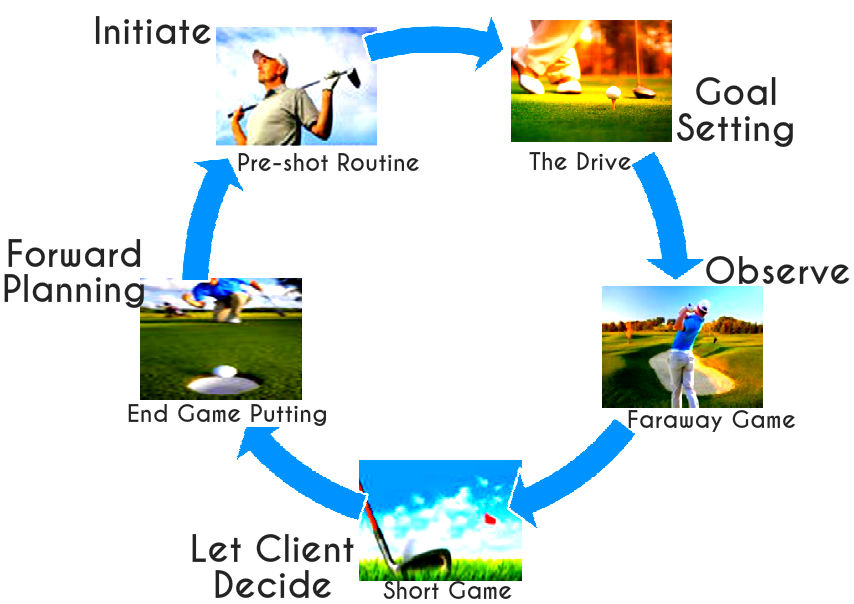A Coaching Model Created by Pramod Nigam
(Executive Coach, INDIA)
 Playing Golf requires certain skills & tools and following a process. A golfer goes through Preshot routines, goes to the tee-box for a drive, plays the fairway game, plays short game, as required, and finally ends the hole by putting the ball in the hole. Coaching, like golf, also requires skills & tools and requires a process to be followed. There are several coaching models available in literature, however, my model “ I – GOLF” outlined below draws heavily from the game of Golf and the ‘GROW’ & ‘BIGWIN’ models of coaching. The model is explained below:
Playing Golf requires certain skills & tools and following a process. A golfer goes through Preshot routines, goes to the tee-box for a drive, plays the fairway game, plays short game, as required, and finally ends the hole by putting the ball in the hole. Coaching, like golf, also requires skills & tools and requires a process to be followed. There are several coaching models available in literature, however, my model “ I – GOLF” outlined below draws heavily from the game of Golf and the ‘GROW’ & ‘BIGWIN’ models of coaching. The model is explained below:
Initiate
Initiation means before starting a coaching session which is greeting the client, acknowledging her presence and celebrating past successes. A recap of the previous coaching session is also a good idea before starting a session.
Goal Setting – Specific Outcome
In Coaching it is important to understand what is the issue? Agree with client what would you like to achieve by the end of this session? Determine the specific goal for the session.
What do you hope to accomplish? is a typical goal-directed query. Contrast between end goals, like I want to be the CEO, and performance goals, such as I want to sell 100 cars.
Some of the important questions to be asked at this stage are:
Relate this to current reality and paraphrase and clarify. Finally, ask the client as how will he know that he has achieved (the goal)?
Observe, Listen, Empathize
In coaching this is where a coach spent most of the time. Coach is ‘present’ and remains ‘nonjudgmental ‘and takes the client to a goal with good listening and right questioning.
The coach explores the issue further, listens, empathizes, and raises awareness of current situation. Examines how current reality is affecting the goals, explore feelings and emotions.
How does this really affect you? What’s underneath all this? Keep the questions forwardfocused.
Some helpful questions are:
From here go on to explore options to move forward.
Let Client Decide – among the explored Options
Coach then encourages client to develop options. He challenges the client where required. Don’t let client arbitrarily limit their choices, have them create lists of options and examine the pros and cons of each one.
Helpful questions are:
That’s a great idea, what’s another? Or ask, Which of the options gets you closest to what you want? You may say Imagine having a dialogue with the wisest person you know. What would he or she tell you to do? Or, What advice would you give a colleague in your situation?
Encourage solution focused and action oriented thinking and brainstorming. Coach can offer own suggestions, if client is stuck but carefully and with permission.